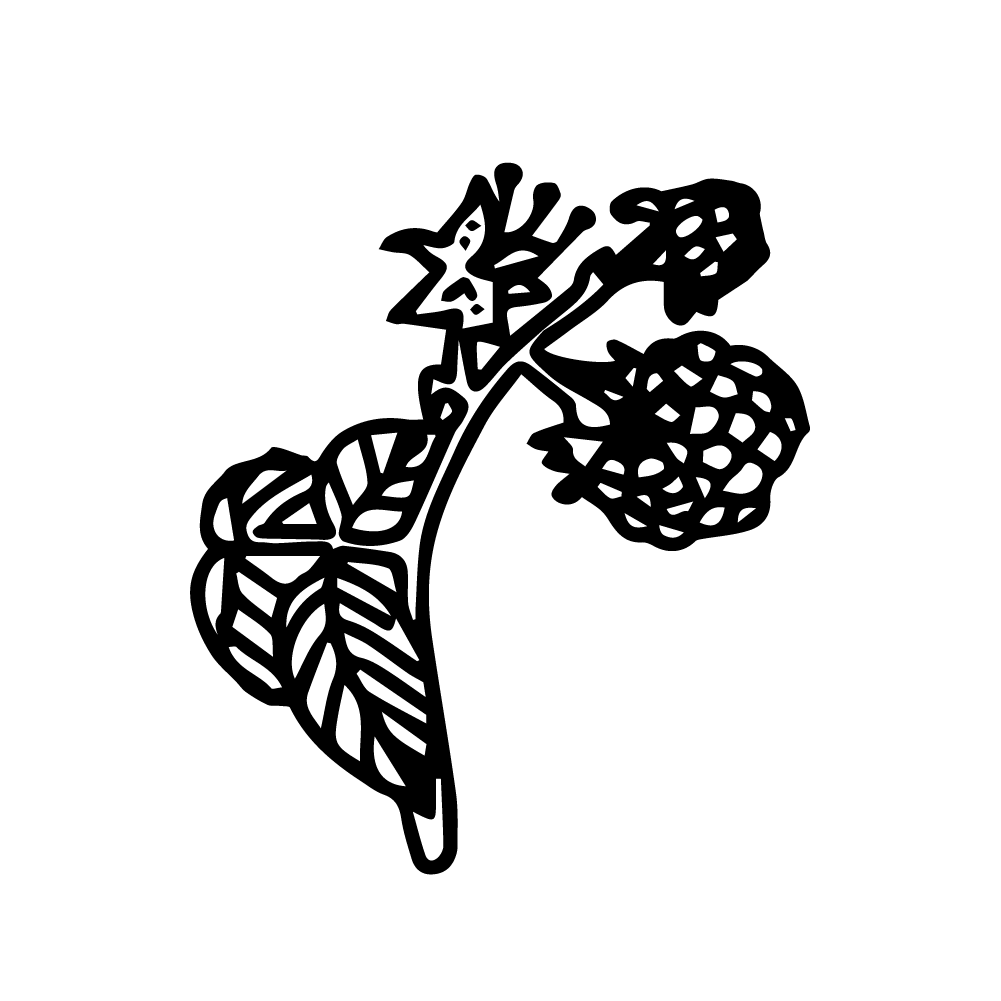Raspberry (Rubus idaeus L.) vector
Raspberry (Rubus idaeus L.) herb vector in PNG and SVG. All stuff transparent, no background, outline style, herb vectors catalog for free.

About Raspberry (Rubus idaeus L.)
Stems 1-2 m tall, rounded, with averted tops, spiny only at the lower part. Leaves are compound, unevenly pinnate, the lower leaves consisting of 5-7 leaflets, the upper leaves of 3. The leaflets are ovate, unequally toothed, with pointed apexes, a rounded or heart-shaped base, the underside of which is covered with white hairs, the upper side of the leaflets being glabrous or sometimes slightly hairy. Flowers about 1 cm across, drooping, stacked in several bell-shaped inflorescences, white. The fruit is compound (berry), composed of numerous pale red, downy fruits, easily detached from the conical flagellum. Flowering May-June. Fruits ripen in July-August.
Active ingredients. Raspberry berries contain 2,6-7,1 % sugar, of which 0,2-2,2 % sucrose and 1,8-5,0 % monosaccharides (glucose and fructose), 1,0-2,2 % organic acids: citric, malic, salicylic, caproic, formic, and ant; vitamins: C – 15,7-30,2 mg%, P – 60 mg%, B, – 20 mg%, PP – 300 mg%, carotene – 0,3% mg; 0,3% of tannic substances, cyanine chloride, essential oil, pectic substances, acetoin, ß-ionone, benzaldehyde, minerals: phosphorous, copper, iron; purines, especially abundant in the dried berries (62,7%). The seeds contain up to 14,6 % fat and 0,7 % phytosterol.
Preparation. The ripe raspberry berries (Rubi idaei fructus) are harvested in July-August and the leaves (Rubi idaei folium) in June-September. The berries are dried by spreading them thinly on a thin material or sieves, winding them in the open air, in the sun and then drying them in an oven or drying oven at 50 °C. Once dried, the berries must be free from ringworm, 0,75-1,2 cm in diameter, fragrant and sweet when squeezed in a handful, without getting stuck or staining the hand. One kg of undried berries yields 160-180 g dry. Suitable for consumption for 2 years. The berries can also be stored in the freezer at -18 °C. The leaves can be dried in shelters or in a drying room at 40-45 °C. Suitable for 1-2 years.
Usage. Raspberries reduce fever, stimulate sweating, inhibit inflammation, relieve pain and lower blood sugar. They are used to treat colds, runny noses, bronchitis, to stimulate sweat and urine, to improve appetite, to regulate the gastrointestinal tract, to stop vomiting and bleeding, to promote physical and mental activity in the event of heavy menstruation. The compresses are applied to non-healing skin ulcers, burns and dilated veins. Raspberries strengthen the body and have a tonic effect. The tops of raspberry twigs with leaves are used for the same diseases as the berries.
Contraindications. Due to its high purine content, raspberries are not recommended for gout and nephritis, gastritis, gastric and duodenal ulcers, gout, polyarthritis and osteochondrosis. Raspberry leaf tea should be avoided by pregnant women during the first months of pregnancy.
Information source: https://en.wikipedia.org/wiki/Rubus_idaeus